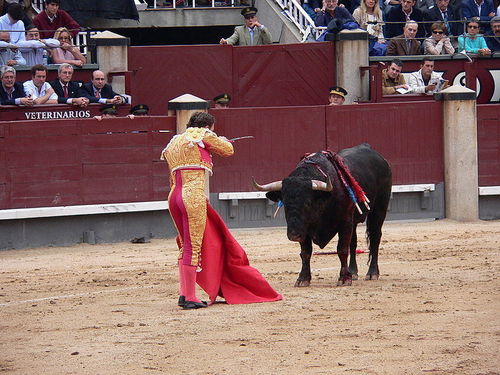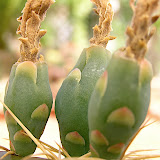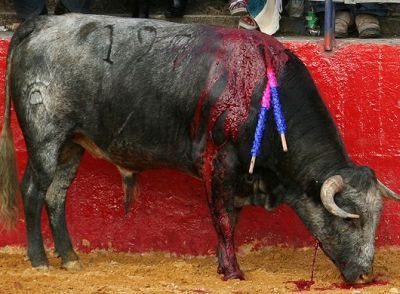 Following the Catalonian parliament's decision to ban bullfighting in the region, effective from 1 January 2012, the bullfighting boyos have banded together to form a front, hoping to petition the Minister of Culture, Ángeles González-Sinde Reig, to classify their barbarous activity as one of culture.
Following the Catalonian parliament's decision to ban bullfighting in the region, effective from 1 January 2012, the bullfighting boyos have banded together to form a front, hoping to petition the Minister of Culture, Ángeles González-Sinde Reig, to classify their barbarous activity as one of culture.On 30 July, the bullfighters Enrique Ponce, José Antonio Morante de la Puebla, Julián López “El Juli”, David Fandila “El Fandi”, Sebastián Castella, José María Manzanares, Miguel Ángel Perera, Alejandro Talavante and Cayetano Rivera, as well as other leading figures in the bullfighting world, met and formed a group to request a meeting with the Spanish Minister of Culture. It seems that bullfighting is currently the responsibility of the Ministry of the Interior; these ne'er-do-wells want to change the responsibility to rest with Culture. Their idea is to present a counter-offensive against any possible expansion of the anti-bullfighting movement in the rest of Spain. Needless to say, they are supported in their desires by the ultra-right PP (the main opposition party in the Spanish national parliament), who have announced their intention to have bullfighting declared an item of Cultural Interest
Culture, my foot!
Because something has taken place for a few hundred years, does not make it culture. If that were the case, we'd still be throwing Christians to the lions (actually, not such a bad idea when it comes to pedophile padres). If that were the case, we'd still be executing people in public. If that were the case, we'd still be kicking severed heads around instead of footballs…
Bullfighting is nothing more than the unnecessary and cruel infliction of pain, suffering, humiliation, degradation, and stress, on a living, breathing, feeling creature.
Simply put, bullfighting is depravity.
There is no way that anyone can rightfully defend such inhuman actions as culture.
If it must be declared as anything, then declare it a National Disgrace.





 The nine days of the San Fermin festivals in Pamplona have just come to an end. Basically, a long week of drunkenness, using an ancient "tradition" to justify such boorishness and the peculiar cruelty to bulls for which Spain should be ashamed.
The nine days of the San Fermin festivals in Pamplona have just come to an end. Basically, a long week of drunkenness, using an ancient "tradition" to justify such boorishness and the peculiar cruelty to bulls for which Spain should be ashamed.
